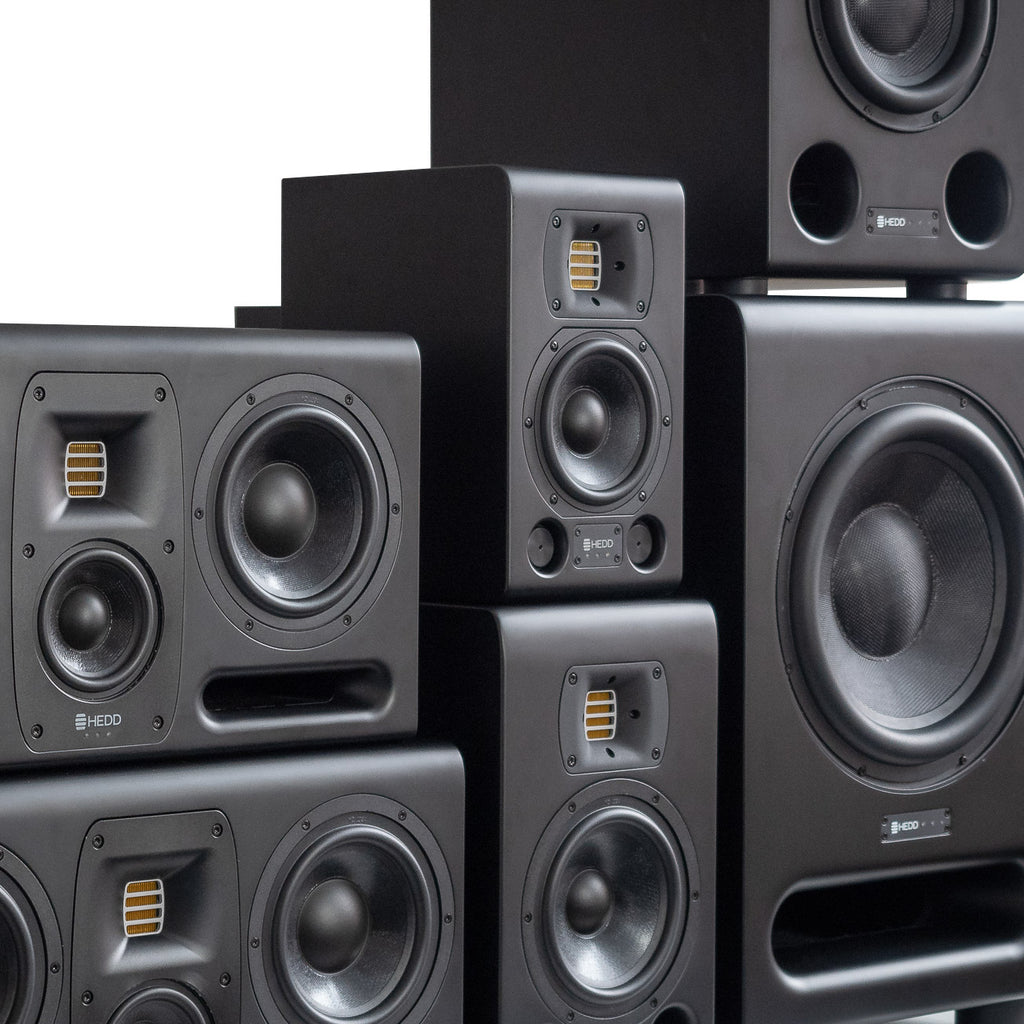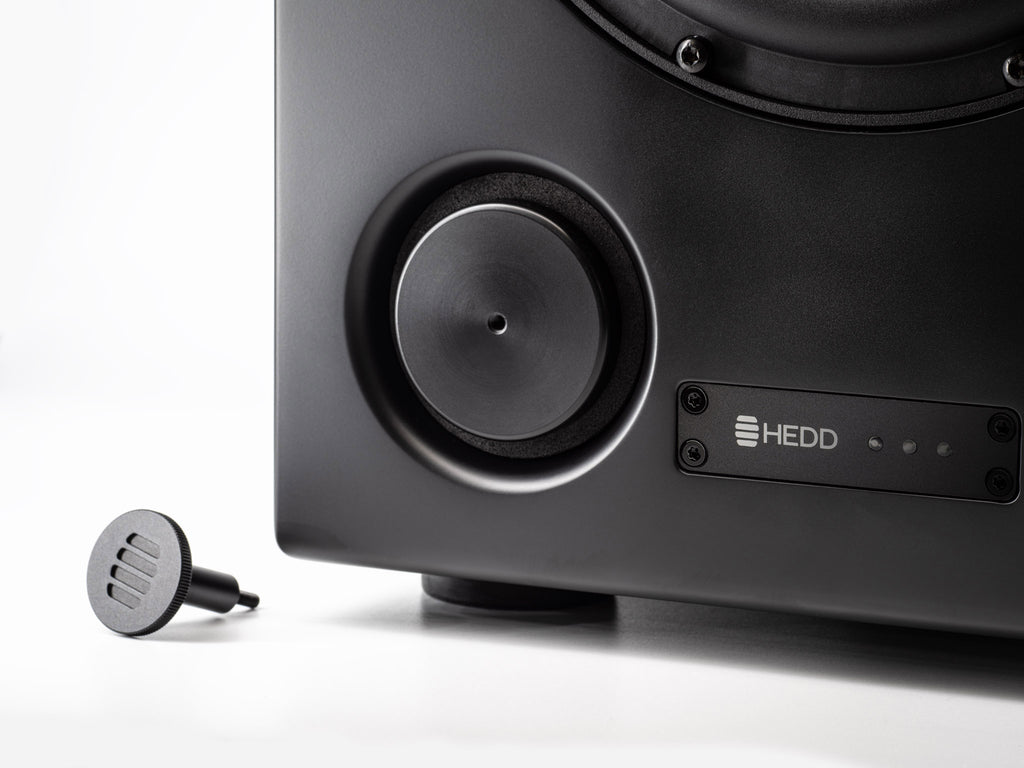What the Plug?
Explaning COP technology
With its MK2 monitor series HEDD Audio makes it possible for the user to choose between Closed or Ported use of the loudspeaker.
Loudspeaker cabinets mainly come in 2 flavors: either as a closed box, sometimes called infinity baffle, or open, meaning with a bass reflex or port engaged. There are more and refined versions in both cases, but the vast majority of commercial loudspeakers is described by one of these two categories.
Ported speakers take the sound from the rear side of the woofer diaphragm to increase the efficiency of the system to either reach lower frequencies or higher sound pressure levels. This comes on cost of irregularities in the bass up to midrange frequencies originating from the additional nonlinear sound emanating from the tubes. An ideal impulse response is not possible with open designs, good approximations to precise low-end reproduction that way are possible but not often the case. The accompanying temptation is to allow higher “Q” values of a system, dictating the resonance behavior of speakers. Slightly "over-Q'ed" speakers may sound very appealing and impressive, and although they are underdamped some would say: They rock, which is actually true especially when a voluminous cabinet is in use.
Due to the mentioned properties ported designs are used in the vast majority of professional and home hi fi speakers. Closed boxes, however, have the advantage that they and only them can deliver a theoretically perfect impulse response for low frequencies. The sound output can be well calculated and consequently digital filters can work right to the point. The price paid is that only 50% of the acoustical output reaches the listener, the 50% from the backside of the diaphragm "disappear" in the damped volume of the cabinet. As a consequence the lower corner of the frequency response (the so called -3 dB point) is more difficult to reach and the maximum in sound pressure level is ~6 dB lower.

Choose between Closed or Open (CoP) Low-end Response
This idea came to life when the HEDD R&D team developed the "Tower Mains", a no compromise speaker system for use in Recording and Mastering Studios. We wanted to pave the way for the principal advantage of closed systems without limits in high sound pressure levels or low end reach. Our goal was to bring the system down to 20 Hz (-3 dB) and therefore enable the full listening spectrum whilst getting it precise and yes: really loud. To achieve that goal we united 4 excellent long throw subwoofers in a robust cabinet with 4 individual chambers, added the best high-power amplifier we could find.
The sonic results were so convincing that we felt the need to offer comparable experiences to all potential studio monitor customers, even if that meant somewhat less in SPLmax. We wanted to enable a choice for the customer by implementing separate signal paths for the two different modes.

The Way to Go: CoP in Practice
To achieve an optimum in reproduction quality for closed or ported operation we had to combine removable plugs for the ports and switchable specific signal paths to filter the speakers accordingly.
We designed our own foam plugs that hermetically seal the ports and can be removed with a knurled screw. On the back panel of the monitors there is a rotary "CoP" switch to set the electronic filters to either "CLOSED" or "PORTED", it needs to be set accordingly of course.
By developing CoP, we offer our customers the choice to turn their MK2 monitors from powerful, loud and modern speakers to precise and truly surgical audio knifes - and the other way around.









